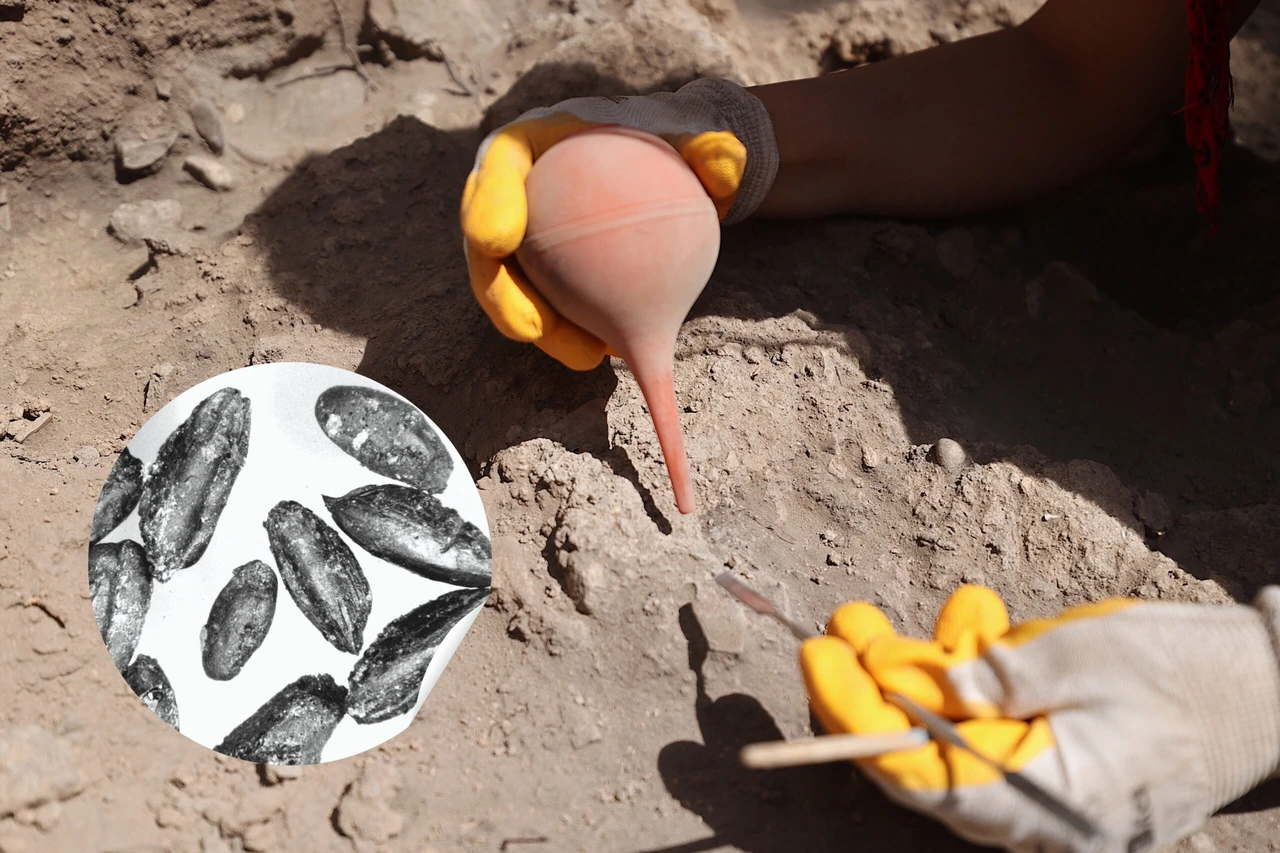Ancient wheat varieties discovered at Türkiye’s Yumuktepe Hoyuk
 Two types of wheat seeds dating back to the Neolithic period have been found during archaeobotanical research conducted at Yumuktepe Hoyuk, one of the oldest settlements in Anatolia, located in Mersin, Türkiye, September 27, 2024 (AA Photo)
Two types of wheat seeds dating back to the Neolithic period have been found during archaeobotanical research conducted at Yumuktepe Hoyuk, one of the oldest settlements in Anatolia, located in Mersin, Türkiye, September 27, 2024 (AA Photo)
Two types of wheat, dating back 9,000 years, were identified during archaeological studies at Yumuktepe Hoyuk in Mersin, a site rich in the traces of various civilizations.
Yumuktepe Hoyuk, one of Türkiye’s oldest settlements, has yielded wheat seeds that trace back to the Neolithic period. The findings come as a result of archaeological excavations that began in 1937 and have revealed multiple layers of civilization, from the Neolithic to the Medieval period.


Led by associate professor Burhan Ulas from Inonu University‘s Department of Archaeology, the archaeobotanical research has uncovered seeds of two wheat species: Triticum timopheevii (new type spa wheat) and Triticum spelta (the most primitive form of bread wheat). These wheat varieties were identified through “ancient DNA” analysis.

Yumuktepe Hoyuk’s role in spread of Neolithic agriculture
Associate professor Ulas, who is also the excavation coordinator, highlighted the importance of Yumuktepe in the spread of Neolithic agriculture.
He stated, “We believe that Yumuktepe played a crucial role in the dissemination of Neolithic agriculture from the Eastern Mediterranean to Europe through both land and sea routes.”
The ongoing excavation and restoration work at the site is part of the Ministry of Culture and Tourism’s “Heritage for the Future” project.

New insights into wheat cultivation
The research team, consisting of 10 members, has focused on carbonized plant remains found at the site. Ulas explained, “We are analyzing these remains in a laboratory setting, particularly focusing on the Neolithic, Chalcolithic, and Byzantine periods.”
He added that the recent findings regarding the two wheat species are particularly significant.
“We have identified a wheat type we refer to as ‘new type spa,’ previously recorded as early as 8,500 B.C. at the Cafer Hoyuk settlement. We also found Triticum spelta at Yumuktepe, one of the earliest known locations for this species.”

Historical implications of new discoveries
Ulas emphasized the historical importance of these discoveries, noting that the Triticum timopheevii species is nearly extinct, with cultivation limited to a narrow area in Georgia. Similarly, the status of Triticum spelta is precarious, as these carbonized seeds have no application in modern agriculture.
Previously thought to have been cultivated only in the Bronze Age, Ulas’s research reveals that Triticum spelta was grown approximately 3,000 to 4,000 years earlier than previously believed. This finding significantly alters our understanding of the origins and spread of Neolithic agriculture.
The discoveries at Yumuktepe Hoyuk not only illuminate the agricultural practices of ancient civilizations but also underscore the site’s pivotal role in the evolution of farming in Europe.



